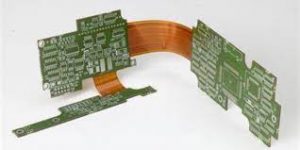Flexible PCB Boards Be Folded Multiple Times
PCBs play a vital role in many products. They imbue them with the necessary strength and performance to ensure that they can operate as designed, even in harsh environments. These versatile circuits are used in a variety of industrial applications, including aerospace, military, and healthcare devices. While traditional rigid PCBs can be effective for the majority of these applications, flexible circuits are more durable and provide an optimal combination of form and function. They are also easier to assemble due to their slim configurations and minimal assembly steps. Nevertheless, a few rules should be followed when using flexible circuits to prevent design errors and potential damage during handling.
One of the most important considerations when designing a flexible pcb board is to ensure that it can be folded without causing damage or electrical failure. This can be achieved by using thinner copper traces and wide endings to reduce the resistance in bend areas. Additionally, it is recommended that the traces be staggered to minimize stress on them. Moreover, the use of pad fillets and large corner radius are helpful in eliminating tears in a flex circuit board.
The next important aspect to consider is the layout. This can be challenging since a flex circuit is more difficult to solder than a rigid one. In addition, it may be difficult to maintain the required spacing between components. In these cases, it is recommended that you consult with a professional flex circuit design expert to help you determine the best layout for your project.

Can Flexible PCB Boards Be Folded Multiple Times?
Another important issue to consider when using a flex circuit is the thickness of the board. Since flex circuits are more fragile than rigid ones, it is recommended that you avoid making them too thin. In addition, it is crucial that you use a high-quality FR-4 material or metal for the base substrate to increase its strength. This will protect the board from damage caused by bending or other physical forces.
Additionally, you should also take into account the type of materials that are being used for the flex circuit board. These materials include the coverlay, flexible solder mask, and stiffeners. These may vary from those used in a rigid PCB, which can impact the cost.
Finally, it is crucial that you choose the right type of flex circuits for your project. For example, if your device will be used outdoors, then you should opt for a waterproof design. This will protect your product from water, moisture, and chemicals.
Lastly, you should be aware that a flex PCB is more expensive than a rigid PCB. Therefore, it is essential that you carefully calculate the cost of your design before ordering from a manufacturer. PCBway has a detailed calculator that can help you do this. This calculator will allow you to see how much your flex circuit will cost. It will also give you advice on how to decrease the price of your flex circuit. This will save you money and ensure that your flex circuits are produced at a competitive price.